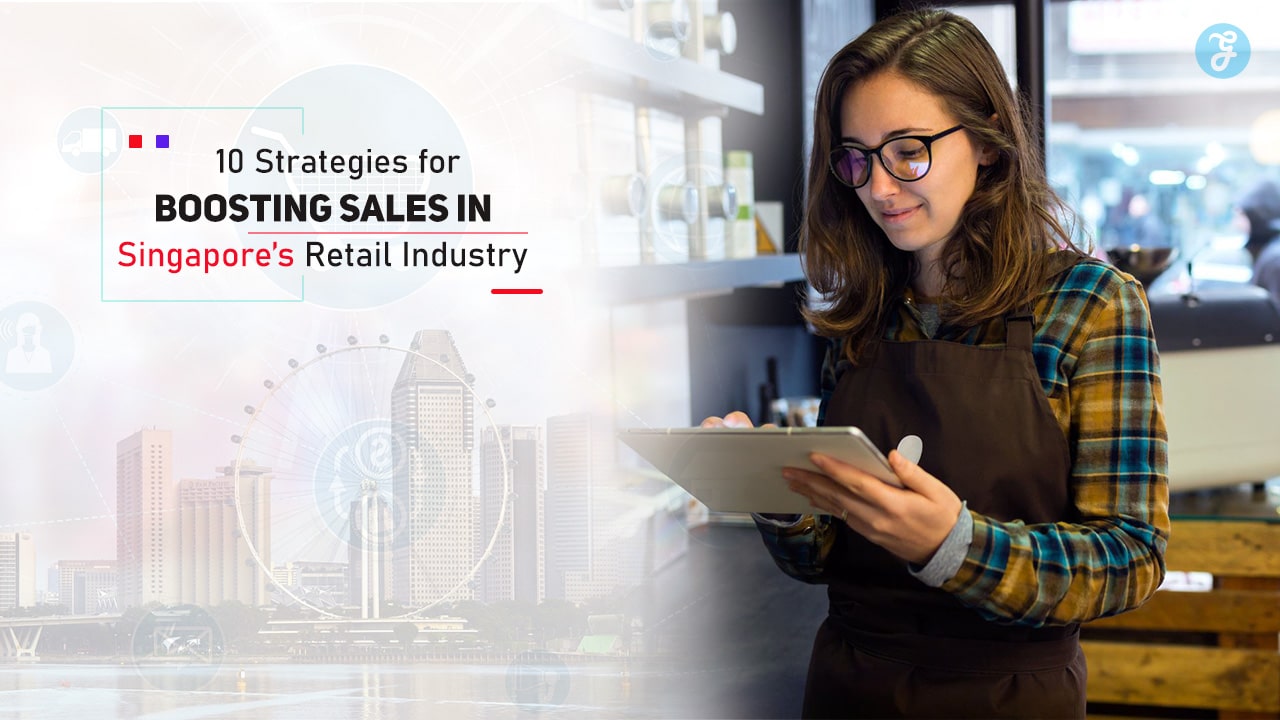Singapore’s retail industry is one of the most dynamic in Asia, offering a blend of traditional markets, luxury malls, and cutting-edge e-commerce platforms.
As competition intensifies, retailers must adopt innovative strategies to boost sales, attract loyal customers, and stay ahead of market trends.
This article explores 10 actionable strategies tailored to Singapore’s unique retail landscape, designed to help businesses thrive in this bustling market.
1. Leverage Data Analytics for Personalized Marketing
Why It Matters
Data analytics allows retailers to understand consumer behavior, preferences, and purchasing patterns. Personalized marketing increases customer engagement and conversion rates.
How to Implement
- Customer Segmentation: Use data to segment customers based on age, gender, purchase history, and preferences.
- Targeted Promotions: Offer tailored discounts and recommendations through email or SMS.
- AI Tools: Use AI-driven platforms like Google Analytics or CRM systems to gather insights and automate personalized campaigns.
Example in Singapore
Retail giants like Zalora leverage data analytics to send personalized product recommendations to shoppers, resulting in higher sales and customer loyalty.
2. Optimize Omnichannel Retailing
Why It Matters
Today’s shoppers expect a seamless experience across online and offline channels. Omnichannel retailing bridges the gap between digital and physical stores.
How to Implement
- Integrated Systems: Sync inventory, pricing, and promotions across all platforms.
- Click-and-Collect: Allow customers to buy online and pick up in-store.
- Consistent Branding: Ensure branding and messaging are consistent across all channels.
Example in Singapore
Charles & Keith offers a seamless omnichannel experience, allowing customers to shop online and pick up their purchases at physical stores.
3. Enhance the In-Store Experience
Why It Matters
Despite the rise of e-commerce, many customers still value the tactile and social aspects of physical shopping.
How to Implement
- Interactive Displays: Use digital screens or AR technology to showcase products.
- In-Store Events: Host workshops, product launches, or seasonal celebrations.
- Customer Comfort: Provide amenities like free Wi-Fi, charging stations, and cozy seating areas.
Example in Singapore
ION Orchard regularly hosts art exhibits and fashion shows to enhance the shopping experience and attract foot traffic.
4. Offer Seamless Payment Options
Why It Matters
Convenient and secure payment options improve customer satisfaction and reduce cart abandonment.
How to Implement
- Mobile Payments: Accept payment methods like PayNow, GrabPay, or Alipay.
- Buy Now, Pay Later (BNPL): Offer BNPL services like Atome or ShopBack for flexible payments.
- Contactless Payments: Enable NFC payments for speed and convenience.
Example in Singapore
Retailers like FairPrice allow customers to pay using QR codes and digital wallets, catering to tech-savvy shoppers.
5. Focus on Sustainability
Why It Matters
Singaporean consumers are increasingly drawn to brands that prioritize sustainability and ethical practices.
How to Implement
- Eco-Friendly Products: Stock sustainable or locally sourced items.
- Reusable Packaging: Offer eco-friendly packaging options to reduce waste.
- Corporate Responsibility: Highlight green initiatives in marketing campaigns.
Example in Singapore
Brands like LUSH promote sustainable practices by offering refillable packaging and eco-friendly products.
6. Strengthen Customer Loyalty Programs
Why It Matters
Loyalty programs encourage repeat purchases, increase customer retention, and boost lifetime value.
How to Implement
- Point-Based Rewards: Allow customers to earn points for every purchase, redeemable for discounts or gifts.
- Exclusive Benefits: Offer VIP members early access to sales or free shipping.
- Gamification: Use apps to gamify the loyalty experience, making it engaging and fun.
Example in Singapore
CapitaStar, a loyalty program by CapitaLand, rewards shoppers with points redeemable at its malls across Singapore.
7. Utilize Social Media Marketing
Why It Matters
Social media platforms like Instagram, TikTok, and Facebook are powerful tools for engaging customers and driving sales.
How to Implement
- Influencer Collaborations: Partner with local influencers to promote products.
- Interactive Content: Use polls, live streams, and stories to engage followers.
- Shoppable Posts: Enable direct purchases from social media platforms.
Example in Singapore
Local brand Love, Bonito uses Instagram stories and influencer collaborations to showcase its products and drive traffic to its online store.
8. Embrace Augmented Reality (AR) and Virtual Reality (VR)
Why It Matters
AR and VR technologies enhance the shopping experience by allowing customers to visualize products before purchasing.
How to Implement
- Virtual Try-Ons: Use AR for customers to try shoes, glasses, or makeup virtually.
- Immersive Store Tours: Offer 360-degree virtual tours of stores.
- Interactive Campaigns: Create AR filters for social media campaigns.
Example in Singapore
Sephora Singapore uses AR technology to let customers try on makeup virtually through its mobile app.
9. Invest in Staff Training
Why It Matters
Well-trained employees are crucial for delivering excellent customer service and driving in-store sales.
How to Implement
- Sales Techniques: Train staff in upselling and cross-selling strategies.
- Customer Interaction: Focus on communication skills and handling complaints effectively.
- Product Knowledge: Ensure employees are well-versed in the features and benefits of products.
Example in Singapore
UNIQLO trains its staff to provide personalized recommendations, enhancing the shopping experience for customers.
10. Run Strategic Promotions and Discounts
Why It Matters
Promotions and discounts can attract new customers, clear old inventory, and increase short-term sales.
How to Implement
- Seasonal Sales: Align promotions with festive seasons like Chinese New Year or Christmas.
- Bundle Deals: Offer discounts on product bundles to increase basket size.
- Flash Sales: Create urgency with limited-time offers.
Example in Singapore
Retailers like Courts and Robinsons often run massive discounts during the Great Singapore Sale, drawing in hordes of shoppers.
Conclusion
The retail industry in Singapore is constantly evolving, requiring businesses to adopt innovative strategies to boost sales and stay competitive.
By leveraging technology, enhancing customer experiences, and focusing on sustainability, retailers can attract a loyal customer base and maximize revenue.
Implementing these 10 strategies will not only help retailers thrive in Singapore’s fast-paced market but also build long-term relationships with customers.
Start applying these strategies today to transform your retail business and achieve lasting success in Singapore!










































